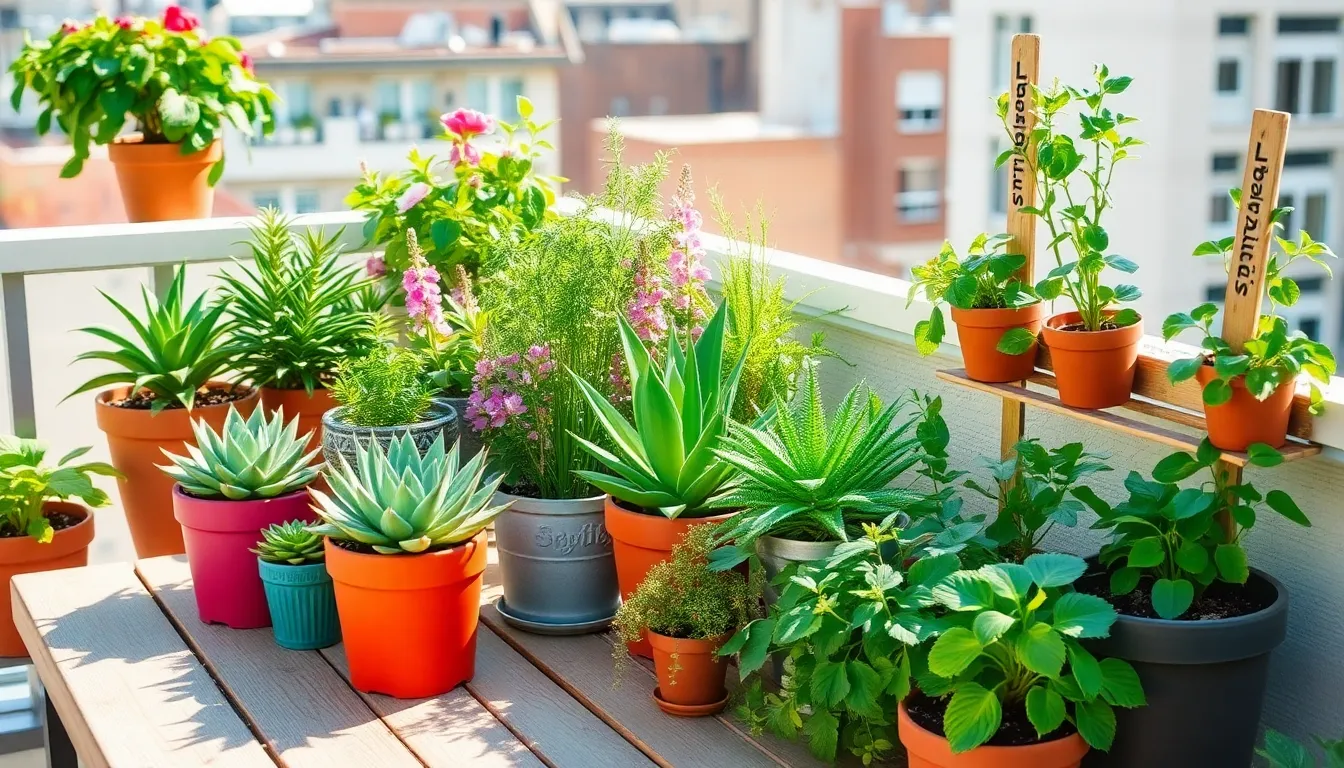Welcome to the vibrant world of balcony gardening, where even the smallest urban spaces can blossom into lush green oases! Whether you’re a seasoned gardener with years of experience or just starting your horticultural journey, this guide to the “10 Best Plants for Apartment Balconies” will become your trusty companion. It’s not just about adding a splash of color or a breath of fresh air to your living space—it’s about transforming your balcony into a thriving retreat that elevates your home and your spirit.
You’ll discover plants that are not only visually stunning but also perfectly suited to the unique challenges of apartment living. From easy-care succulents that bask in the sun to shade-loving ferns that bring tranquility, each plant on our list has been carefully selected for its adaptability and resilience. By the end of this guide, you’ll be equipped with the knowledge and confidence to create a flourishing balcony garden, enhancing both your living environment and your well-being. Let’s dig in and watch your balcony come to life!
Herbs in Hanging Baskets (Space-Saving Aromatics)
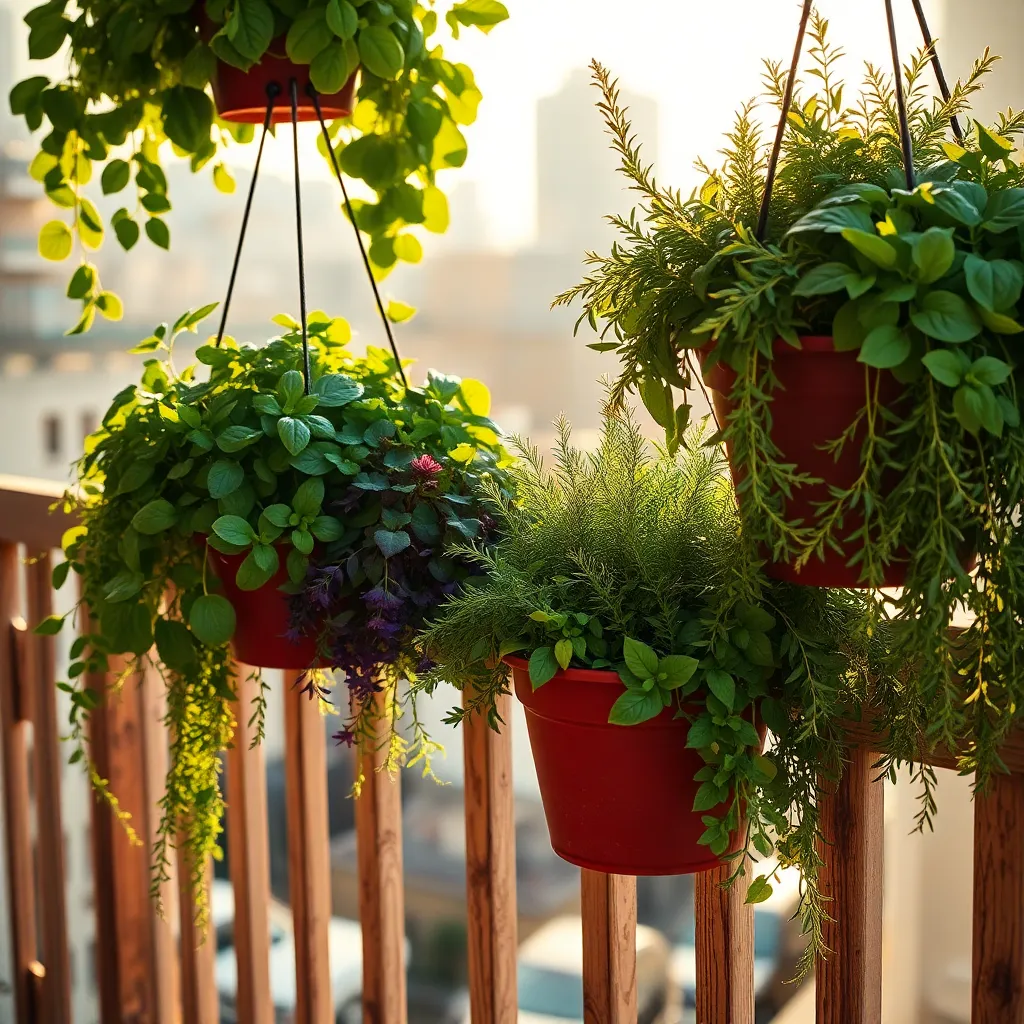
Hanging baskets are a creative way to incorporate herbs into your balcony garden, providing both beauty and utility in a compact space. To start, choose herbs like basil, thyme, and mint, which thrive in well-draining soil mixes, such as a blend of potting soil and perlite.
Ensure your herbs receive at least six hours of sunlight each day, as most herbs require full sun to flourish. If your balcony is shaded, consider using grow lights or selecting shade-tolerant herbs like parsley and chives.
Watering is crucial for herbs in hanging baskets, as they tend to dry out faster than ground-planted herbs. Check the moisture level by sticking your finger into the soil; water when the top inch feels dry, ensuring excess water can drain away to prevent root rot.
For more experienced gardeners looking to enhance their herb baskets, consider incorporating a slow-release fertilizer to provide steady nutrients throughout the growing season. Additionally, routinely pinch back growing tips of herbs like basil and mint to encourage bushier growth and prevent them from becoming leggy.
Dwarf Citrus Trees (Compact Fruit Production)
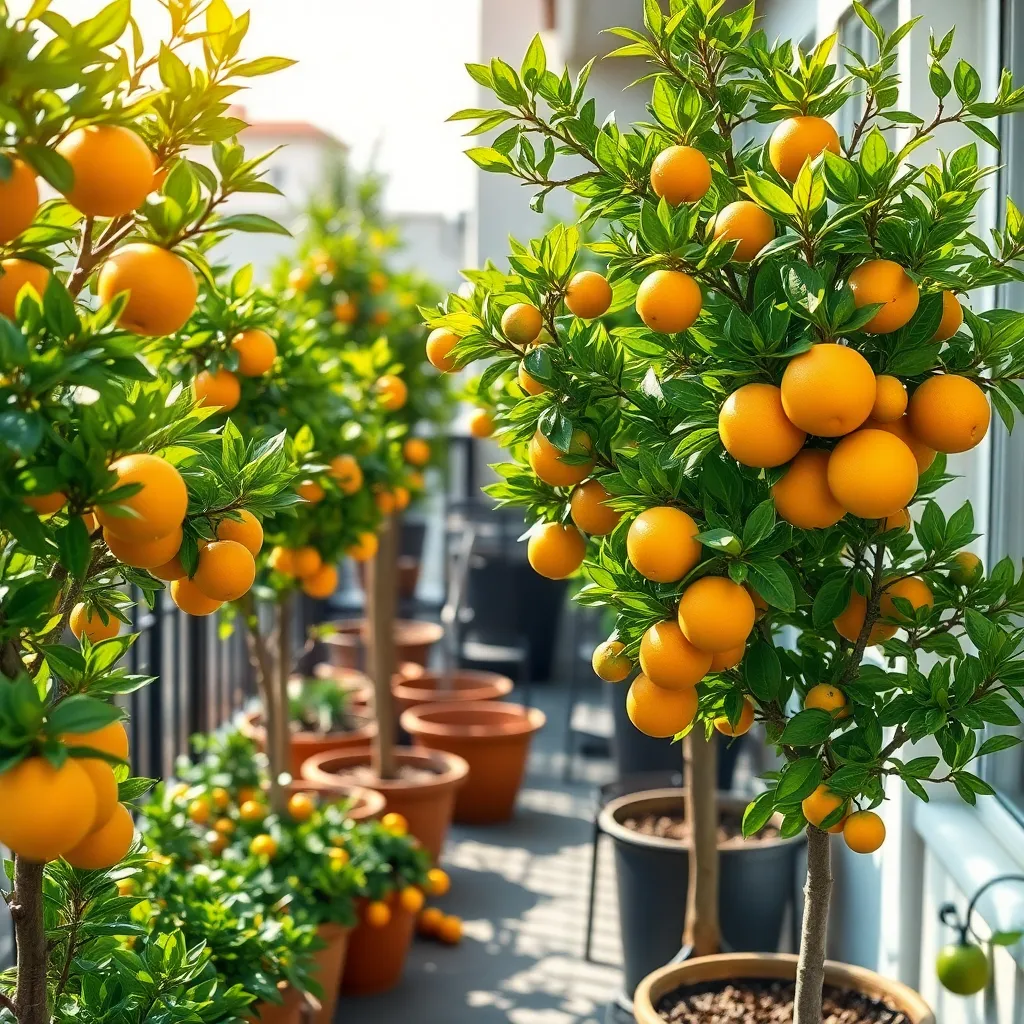
Growing dwarf citrus trees on an apartment balcony is a delightful way to enjoy fresh fruits in a limited space. These compact trees are perfect for containers and can thrive in small spaces with proper care.
To ensure your dwarf citrus tree prospers, place it in a location where it receives at least six hours of direct sunlight daily. If natural light is scarce, consider using a grow light to supplement the sunlight and keep your tree healthy.
Using the right soil mix is crucial for the success of your citrus tree. Opt for a well-draining potting mix, ideally one specifically formulated for citrus or succulents, to prevent root rot.
Water your dwarf citrus tree deeply but infrequently, allowing the top inch of soil to dry out between waterings. During the growing season, feed your tree with a balanced, slow-release fertilizer formulated for citrus to promote lush foliage and fruit production.
- Ensure pots have drainage holes to avoid waterlogging.
- Prune regularly to maintain shape and encourage airflow.
- Protect from frost by moving indoors or using a frost cloth in cooler climates.
Succulent Arrangements (Low-Maintenance Beauty)
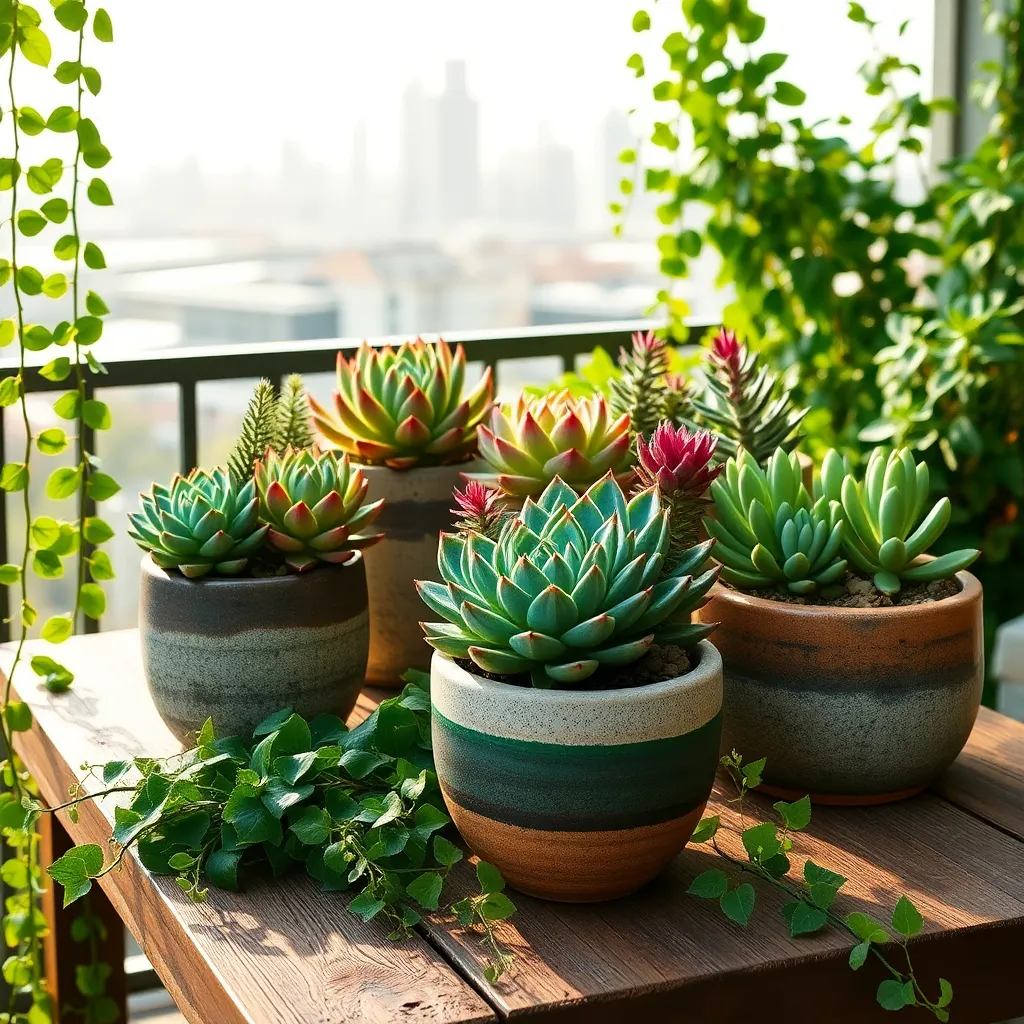
Succulent arrangements offer an elegant yet low-maintenance addition to any apartment balcony. These hardy plants thrive in small spaces and require minimal care, making them perfect for busy urban gardeners.
Start with a well-draining soil mix, such as a cactus or succulent blend, to ensure healthy roots. Place your succulents in a container with drainage holes to prevent waterlogged soil, which can lead to root rot.
Position your arrangement in a spot that receives bright, indirect sunlight for at least six hours a day. While succulents are drought-tolerant, they do need occasional watering—allow the soil to dry completely between waterings to mimic their natural arid environment.
For an eye-catching display, mix different species with varying colors and textures. Try combining rosette-shaped Echeveria with trailing strings of pearls or the bold foliage of Aloe for visual interest.
Vertical Planters (Maximize Limited Space)
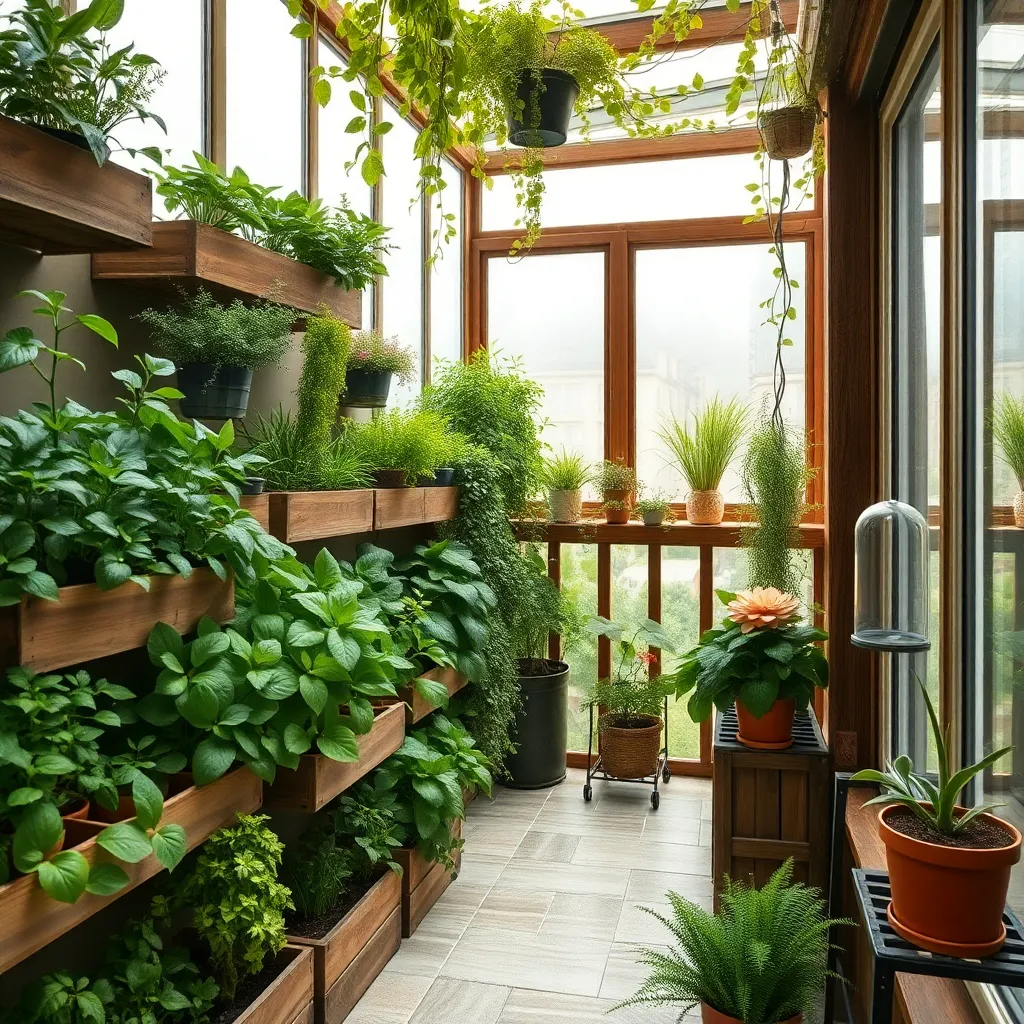
Vertical planters are an excellent way to maximize limited space on apartment balconies, offering a creative solution for urban gardeners. These planters not only save space but also add a lush, green touch to vertical surfaces, transforming any small area into a vibrant garden.
To get started, consider using a variety of containers such as wall-mounted pots or hanging pockets, which can be easily attached to balcony railings or walls. Ensure these containers have adequate drainage to prevent waterlogging, which is crucial for healthy plant growth.
Choose plants that thrive in vertical arrangements, such as herbs like basil and thyme, or trailing plants like ivy and pothos. These species not only adapt well to confined spaces but also provide a lush, cascading effect that enhances the visual appeal of your vertical garden.
Proper care is essential, so make sure to water consistently, especially during the warmer months when balconies can become quite hot. Use a well-draining potting mix and consider adding slow-release fertilizer to give your plants the nutrients they need over time.
For those looking to add a touch of creativity, mix and match different plant textures and colors to create a dynamic and eye-catching display. Experiment with different arrangements and don’t be afraid to adjust as needed, ensuring your vertical planter remains a thriving, beautiful addition to your balcony.
Shade-Tolerant Ferns (Lush Greenery for Shady Spots)
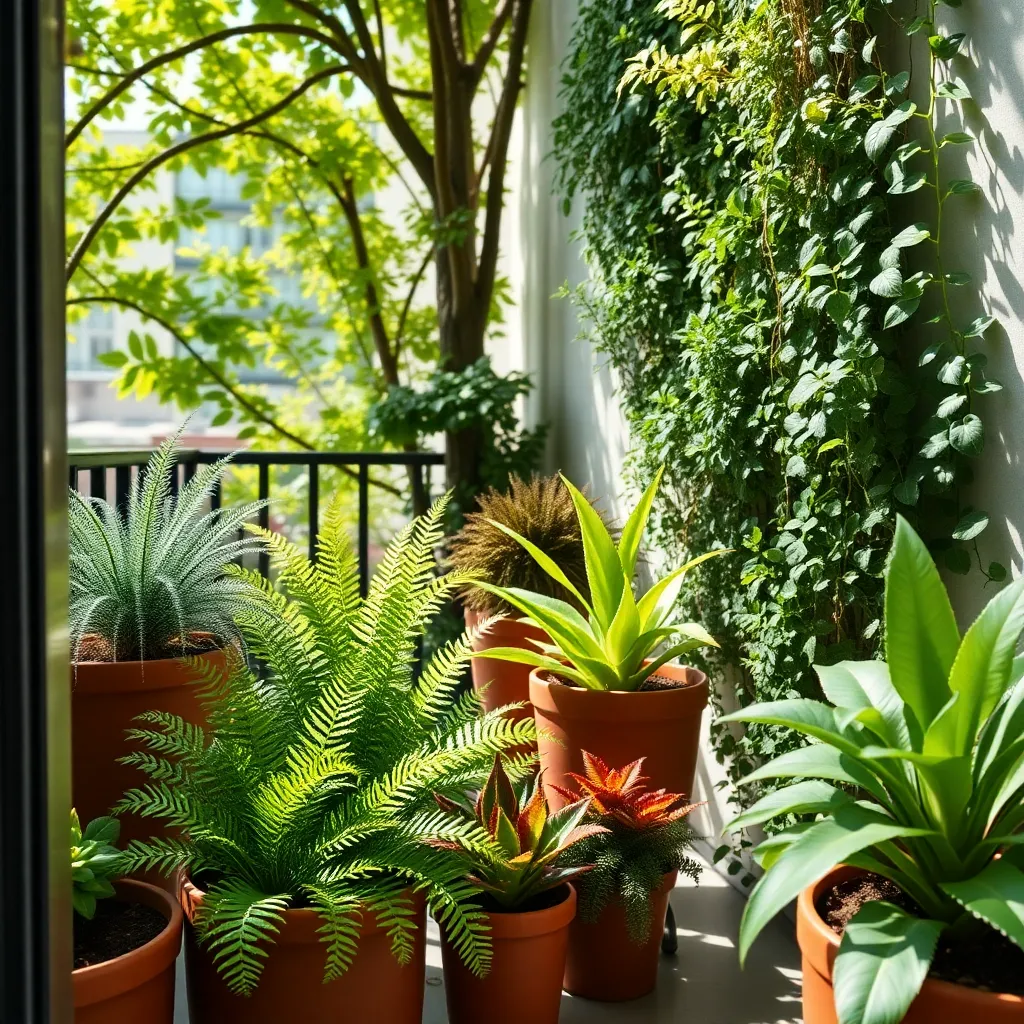
For those seeking lush greenery on a shaded apartment balcony, shade-tolerant ferns are an excellent choice. These plants thrive in low-light conditions, making them perfect for spaces that don’t receive direct sunlight.
When selecting ferns for your balcony, consider varieties like the Boston fern, maidenhair fern, or bird’s nest fern. These types are particularly resilient and can adapt well to indoor environments, requiring just bright, indirect light to flourish.
It’s essential to plant your ferns in well-draining soil rich in organic matter. A mix of potting soil and peat moss can maintain the moisture levels ferns love, while preventing the roots from sitting in water, which can lead to rot.
Water your ferns regularly, ensuring the soil remains consistently moist but not waterlogged. During the hotter months, you may need to increase the frequency of watering to prevent the delicate fronds from drying out.
For those looking to refine their fern care, misting the leaves occasionally can replicate the humid conditions they enjoy in nature. Additionally, consider using a balanced liquid fertilizer every four to six weeks during the growing season to support their vibrant growth.
Pollinator-Friendly Flowers (Encourage Urban Biodiversity)
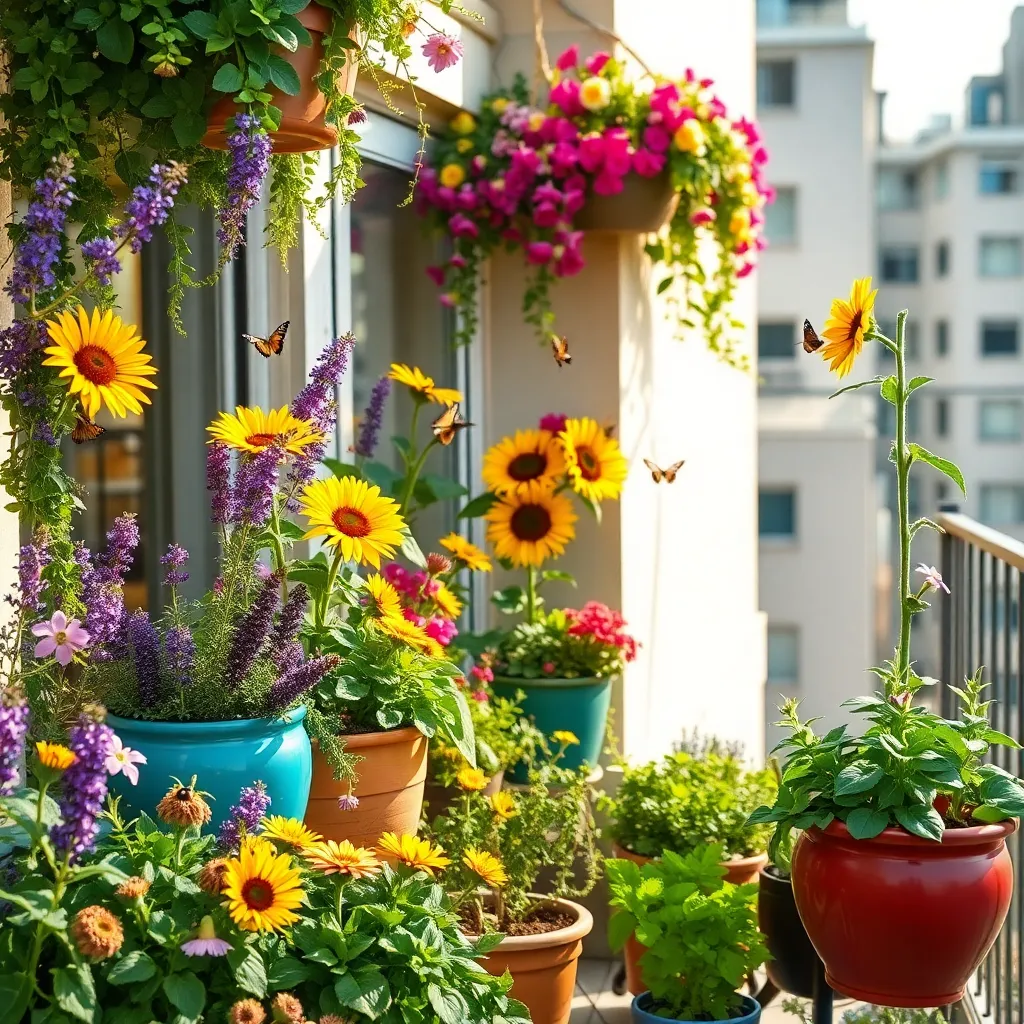
Brighten up your apartment balcony with pollinator-friendly flowers and contribute to urban biodiversity. Flowers like lavender and marigolds not only add color and fragrance but also attract bees and butterflies, enhancing your garden’s ecological value.
For beginners, choose flowers that are easy to grow and maintain, such as zinnias and cosmos. These flowers thrive in containers, requiring well-draining soil and full sun exposure to flourish.
Water these plants moderately, making sure the soil dries out between watering to prevent root rot. Adding a layer of mulch can help retain moisture and regulate soil temperature, providing a stable environment for your plants.
Experienced gardeners can experiment with a mix of annuals and perennials to keep the balcony blooming throughout the year. Consider planting a variety like echinacea or salvia, which can be deadheaded to encourage continuous blooming and attract a diverse range of pollinators.
Climbing Vines (Natural Balcony Privacy)

Climbing vines are an excellent way to add natural privacy to your balcony while enhancing its aesthetic appeal. These versatile plants can be trained to cover railings or trellises, providing a lush green screen that also helps insulate against noise and pollution.
To ensure healthy growth, select a vine variety that suits the light conditions of your balcony. For sunny spots, consider species like morning glory or trumpet vine, while shaded areas might benefit from shade-tolerant options such as English ivy.
When it comes to soil, climbing vines generally thrive in well-draining potting mix enriched with organic matter. Water the plants deeply but infrequently, allowing the soil to slightly dry out between waterings to prevent root rot.
For those looking to maximize growth, regular pruning is essential to maintain shape and encourage denser foliage. Adding a slow-release fertilizer in the spring can also support robust growth and vibrant blooms.
Self-Watering Pots (Consistent Moisture Control)
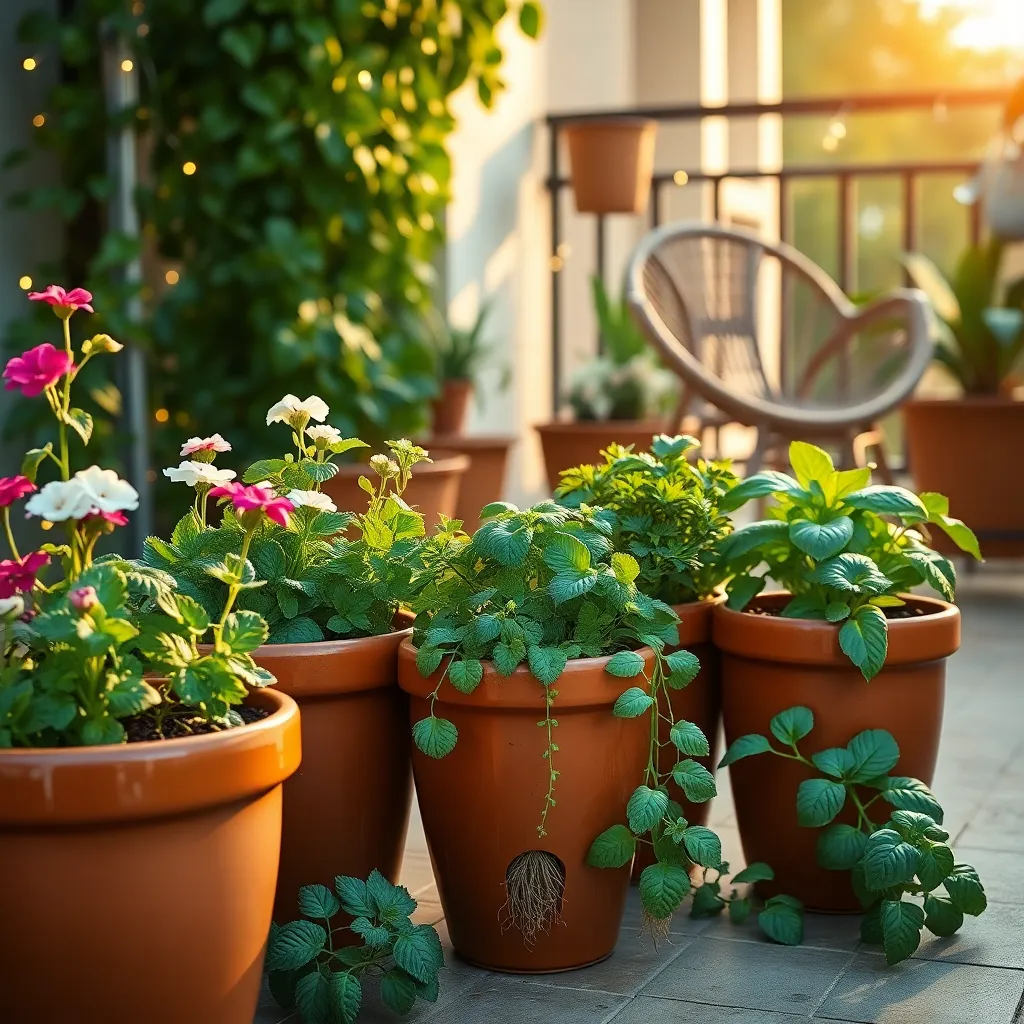
Self-watering pots are a fantastic solution for maintaining consistent moisture levels in balcony plants, ensuring they remain healthy and vibrant. These pots work by using a reservoir system that allows plants to draw up water as needed, minimizing the risk of over-watering or dehydration.
For beginners, choosing self-watering pots can simplify the watering routine, especially when managing multiple plants. Simply fill the reservoir once a week, and let the pot’s design do the rest, making it a perfect choice for busy urban gardeners.
More experienced gardeners can experiment with different soil mixes in self-watering pots, creating an ideal environment for specific plant types. Try a mix of peat moss, perlite, and vermiculite for moisture-loving plants or add coarse sand for those that prefer drier conditions.
To maximize the benefits of self-watering pots, place them in a location where they can receive adequate sunlight while being shielded from intense heat. Monitor the water reservoir regularly to ensure it never runs dry, especially during hot spells or when growing thirsty plants like tomatoes or herbs.
Edible Greens (Fresh Salad Ingredients at Your Fingertips)
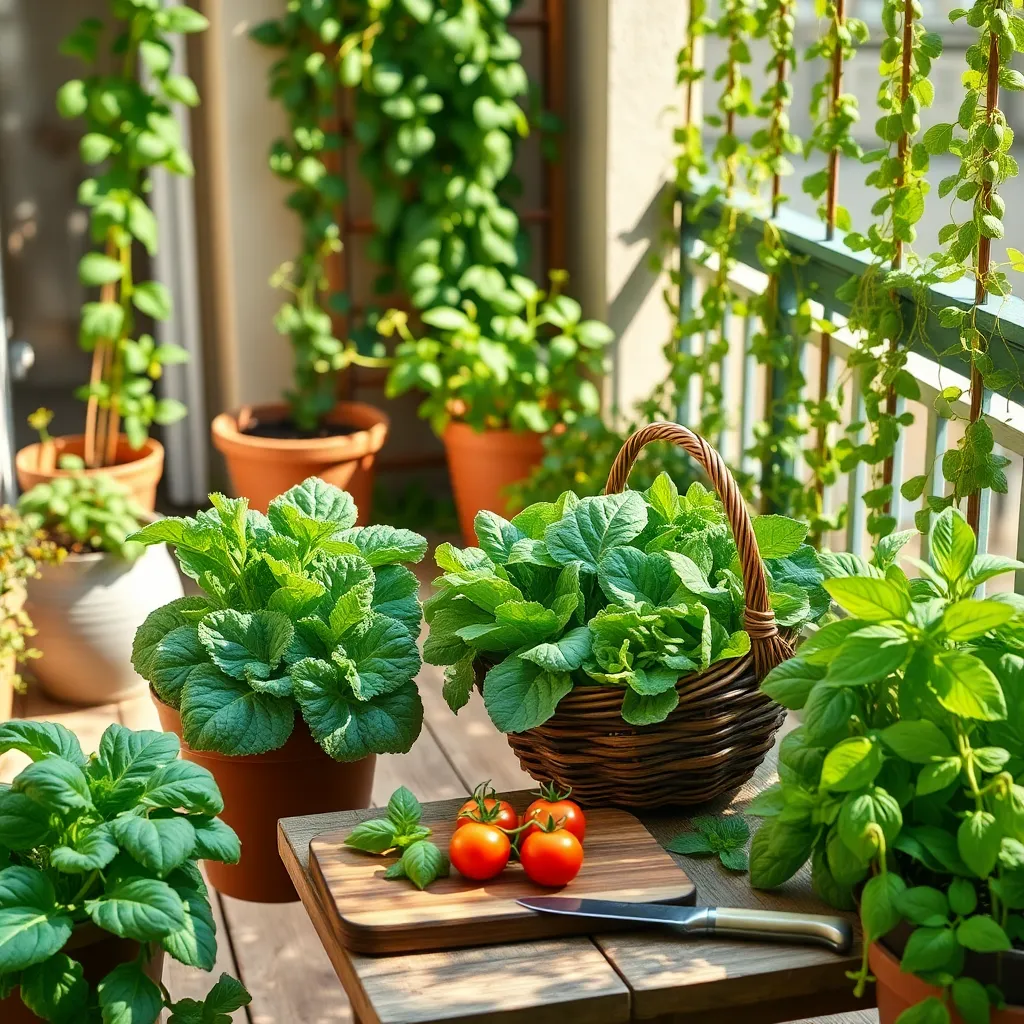
Transform your apartment balcony into a vibrant oasis with edible greens, making fresh salads at your fingertips. Start with easy-to-grow options like lettuce, spinach, and arugula, which thrive in containers and provide a continuous harvest.
Ensure your greens receive at least 4 to 6 hours of sunlight daily, as they thrive in well-lit spots. If your balcony is shaded, consider using grow lights to supplement natural sunlight and promote lush growth.
Use a lightweight, well-draining potting mix to keep your greens happy and healthy. Consistent moisture is key, so water them regularly, ensuring the soil stays damp but not waterlogged.
For more advanced gardeners, try companion planting by adding herbs like basil or cilantro to your containers. These herbs not only enhance your salad flavors but also deter pests, keeping your greens safe and chemical-free.
Compact Roses (Container-Friendly Fragrance)
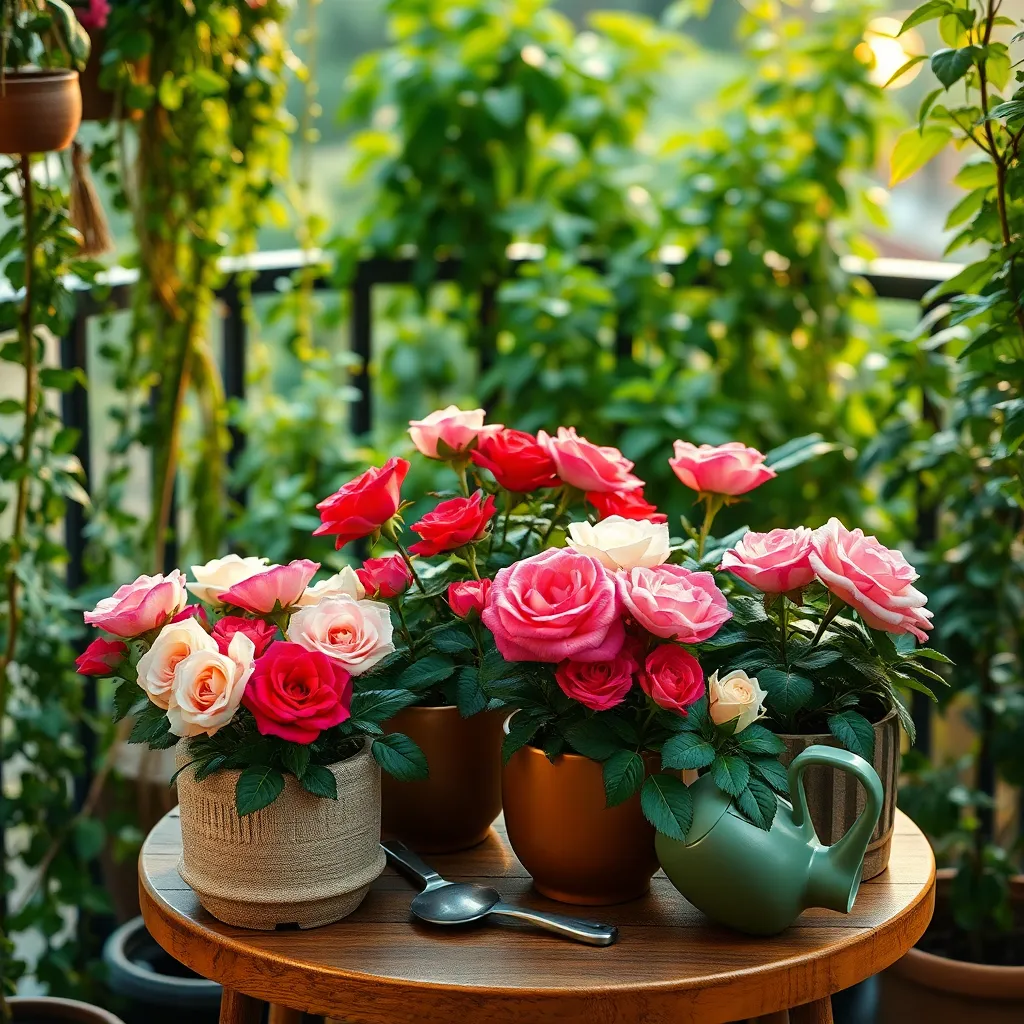
Compact roses are an excellent choice for apartment balconies, offering both beauty and fragrance in a limited space. These roses thrive in containers, making them perfect for urban gardeners with limited garden areas.
To ensure healthy growth, choose a container with good drainage and fill it with a quality potting mix enriched with organic matter. Roses require at least 6 hours of sunlight daily, so position them in a sunny spot on your balcony.
Watering is crucial for container-grown roses, as they tend to dry out faster than those planted in the ground. Water deeply once or twice a week, allowing the top inch of soil to dry out between waterings to prevent root rot.
Feeding compact roses with a balanced, slow-release fertilizer will support their blooming cycle. In addition, deadheading spent blooms encourages new growth and prolongs the flowering period, ensuring your balcony remains fragrant throughout the growing season.
Conclusion: Growing Success with These Plants
In exploring the ’10 Best Plants for Apartment Balconies,’ we’ve delved into how nature can nurture your intimate space and relationships. From the resilience of succulents mirroring the importance of adaptability, to the beauty of flowering plants reminding us of the joy in blossoming together, each plant embodies a key relationship concept. We’ve touched on the soothing presence of lavender that parallels calm communication, and the air-purifying prowess of ferns that symbolizes the necessity of a healthy environment for love to thrive. These insights offer a fresh perspective on relationships, illustrating how the harmony of your living space can enhance emotional connections.
As a next step, consider choosing one plant from our list to introduce to your balcony this week. This small action can inspire growth both in your green space and in your relationship dynamics. Remember, nurturing plants is a lot like nurturing relationships – both require patience, care, and attention.
Be sure to bookmark this article for future reference as you embark on your journey of growth. With each leaf that unfurls, envision your relationship flourishing alongside it. Here’s to cultivating love and connection, one plant at a time.

